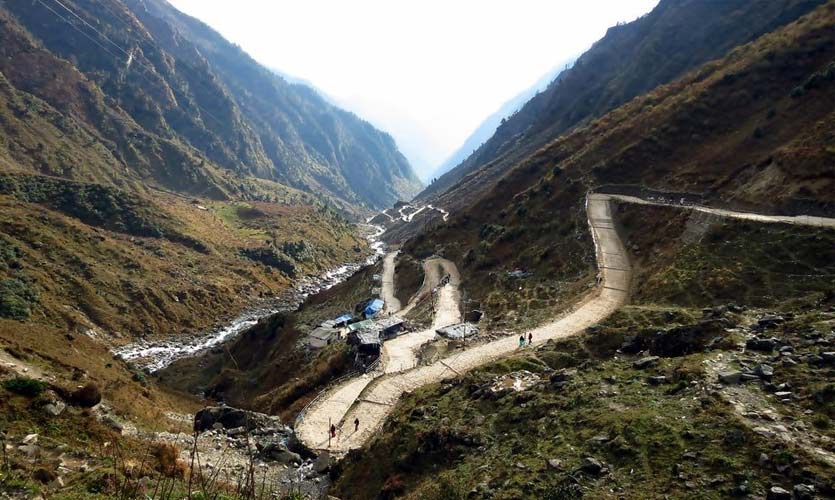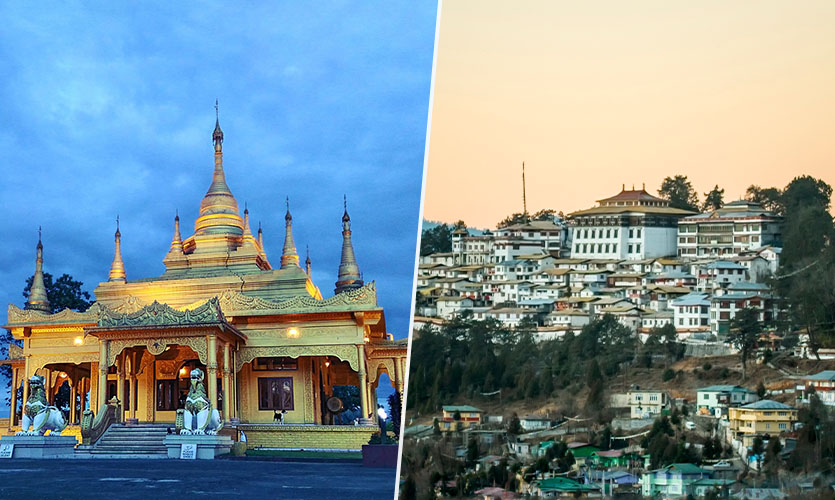On Thursday, November 12, the central government informed the Supreme Court that it needs wider roads in the mountainous Char Dham region of Uttarakhand so that military equipment can be transported to the area near the Indo-China border.
“The army has to take the BrahMos… a large area will be required. If it results in landslides, the army will tackle it. How do we go if the roads are not wide enough,” questioned Attorney General K.K. Venugopal, appearing for the Centre, as reported by the Indian Express.
The SC Bench is in process of hearing a petition filed by the non-profit Citizens for Green Doon that has contested the forest and wildlife clearance granted for expansion and development of feeder roads at Stage-I. The petitioner’s representative in Court, Senior Advocate Colin Gonsalves told the Bench comprising Justices D.Y. Chandrachud, Surya Kant and Vikram Nath that the Centre’s justification that the expansion of these roads is of strategic importance for national security is a ruse and that the armed forces have stated that it does not need the same. “The Army has never said we want these wide roads. Someone high up in political power said we want highways on the Char Dham yatra. The Army reluctantly went along,” stated Gonsalves. Gonsalves also noted that there have been many landslides this year, exacerbating the damage in the mountains. He added, “The development of the highway was for the prestigious Char Dham project. The Army was not considered when these roads were being built. Now you can’t justify the roads for the Char Dham yatra, so you use the Army as an excuse.”
Justice Surya Kant asked Gonsalves what information he had on the condition of the Himalayas across the border where the Chinese have constructed buildings and establishments. “The Chinese government is not known for protecting the environment. We will try and see if we can get any reports on what is the situation there,” said the counsel.
According to PTI, the central government urged the apex court to accept the high-powered committee’s recommendation that the road be upgraded to two lanes with paved shoulders (10 metre wide carriageway) in an affidavit filed previously. “China is building helipads and buildings on the other side… so trucks carrying artillery, rocket launchers and tanks may have to pass through these roads,” Attorney General Venugopal was quoted as saying in court on Thursday, by NDTV. The Supreme Court had earlier ruled that roads in precarious terrain cannot be wider than five metres due to the risk of landslides.
The counsel for the NGO cited instances where three valleys in Pithoragarh near the China border were cut off by landslides for two months, asserting that the civilians and the Army alike required a safe, reliable road that would not get washed away or remain blocked.
Previous Orders
On September 8, 2020, the apex court had passed an order allowing the Union of India to make roads with 10 metres of tarred surface instead of the 5.5 metres ordered before. The Centre filed an application last year to modify the order. According to the order issued on September 8, the hilly and mountainous roads for the Char Dham highway project should be constructed in accordance with the 2018 circular of the MoRTH and therefore, the width of the road should remain 5.5 metres. During the Supreme Court hearing on December 2, 2020, the Defence Ministry had argued that the three national highways – Rishikesh to Mana, Rishikesh to Gangotri, and Tanakpur to Pithoragarh – are feeder roads connecting to our northern border with China.
Background
The Rs 12,000-crore highway expansion project, a flagship initiative of the Centre, was envisioned in 2016 to widen 889 kms of the hilly roads to provide all-weather connectivity in the Char Dham circuit, which covers Uttarakhand’s four major shrines in the upper Himalayas — Badrinath, Kedarnath, Gangotri, and Yamunotri. Prime Minister Narendra Modi laid the foundation stone for the project in December 2016, describing it as a tribute to those who perished in floods in the state.
In 2018, a NGO objected to the road expansion project on grounds of its potential impact on the Himalayan ecology from the felling of trees, cutting of hills, and dumping of excavated material. In order to examine the issues, the Supreme Court formed a high-powered committee (HPC) under environmentalist Ravi Chopra.
In July 2020, the HPC presented two reports due to a disagreement over the ideal width for hill roads. Based on a March 2018 guideline issued by MoRTH for mountain highways, the apex court had upheld the recommendation of four HPC members, including Chopra, to limit carriageway width to 5.5 metres (plus a raised footpath of 1.5 metres).
Reportedly, the majority of 21 HPC members, 14 of whom were government officials, supported a width of 12 metres as proposed in the project, based on national highway double-lane with paved shoulder standards: 7 metre carriageway, 1.5 metre paved shoulders on both sides, and 1 metre earthen shoulders on either side for drains and utilities (hillside) and crash barrier (valley side). The construction of a wider road would require more slope cutting, blasting, tunnelling, dumping, and deforestation, thereby, further destabilising the Himalayan terrain and exposing it to landslides and flash floods.
HPC chairman Chopra responded in August 2020, underscoring how the project was being executed in brazen violation of statutory norms “as if the Rule of Law did not exist”. As per the Indian Express’ report, among these were the commencement of project work without valid permissions or clearance, misuse of old clearances, false declarations, and direct violation of the SC’s judgment. Work had supposedly started on stretches adding up to at least 50 kms, even though the Uttarakhand government had said in an April 2019 affidavit that stretches where work had not yet commenced would be subject to the apex court’s direction.
The Way Things Stand
The three-judge SC Bench, headed by Justice D.Y. Chandrachud, observed on Thursday that the needs of the environment and those of the defence “have to be balanced”.
Both parties concluded their arguments on Thursday. While the NGO pointed out that the MoRTH unilaterally relaxed the hill road regulation last December, the government provided a two-page report on steps taken to prevent landslides.
Both sides were instructed to file their written submissions by Friday, and the hearing is likely to continue next week. The judgment will likely serve as a benchmark for “balancing both concerns” within the legal framework, and will highlight the not-so-fine line between vanity projects and strategic imperatives.










